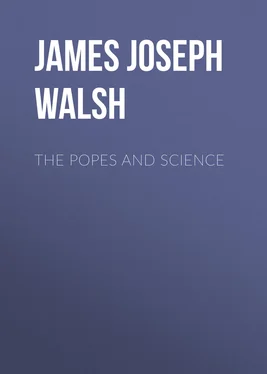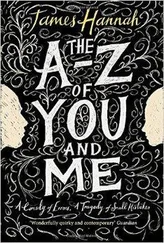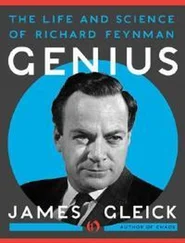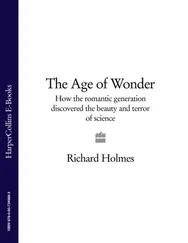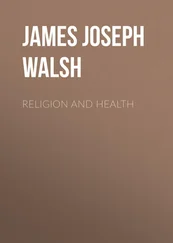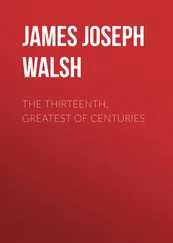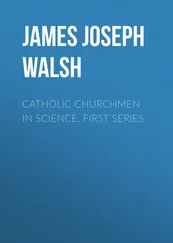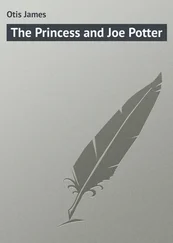James Walsh - The Popes and Science
Здесь есть возможность читать онлайн «James Walsh - The Popes and Science» — ознакомительный отрывок электронной книги совершенно бесплатно, а после прочтения отрывка купить полную версию. В некоторых случаях можно слушать аудио, скачать через торрент в формате fb2 и присутствует краткое содержание. Жанр: foreign_prose, foreign_religion, foreign_antique, на английском языке. Описание произведения, (предисловие) а так же отзывы посетителей доступны на портале библиотеки ЛибКат.
- Название:The Popes and Science
- Автор:
- Жанр:
- Год:неизвестен
- ISBN:нет данных
- Рейтинг книги:4 / 5. Голосов: 1
-
Избранное:Добавить в избранное
- Отзывы:
-
Ваша оценка:
- 80
- 1
- 2
- 3
- 4
- 5
The Popes and Science: краткое содержание, описание и аннотация
Предлагаем к чтению аннотацию, описание, краткое содержание или предисловие (зависит от того, что написал сам автор книги «The Popes and Science»). Если вы не нашли необходимую информацию о книге — напишите в комментариях, мы постараемся отыскать её.
The Popes and Science — читать онлайн ознакомительный отрывок
Ниже представлен текст книги, разбитый по страницам. Система сохранения места последней прочитанной страницы, позволяет с удобством читать онлайн бесплатно книгу «The Popes and Science», без необходимости каждый раз заново искать на чём Вы остановились. Поставьте закладку, и сможете в любой момент перейти на страницу, на которой закончили чтение.
Интервал:
Закладка:
Only those who are thoroughly and completely ignorant of the real status of medical teaching in the thirteenth and fourteenth centuries continue to hold these absurd opinions as to the nullity of medieval medicine and surgery. The reading of a single short recent contribution to medical history, the address of Professor Clifford Allbutt, Regius Professor of Physic at the University of Cambridge, England, before the Congress of Arts and Sciences at the Exposition held in St. Louis in 1904, "On the Historical Relations of Medicine and Surgery down to the Sixteenth Century," would suffice to eradicate completely such traditional errors. He pointed out some surprising anticipations of what is most modern in medicine and surgery in the teachings of William of Salicet and his pupil Lanfranc, Professors of Medicine and Surgery in the Italian Universities and in Paris during the thirteenth century. As these two professors were the most distinguished teachers of surgery of the period and the acknowledged leaders of thought in their time, their teaching may fairly be taken as representative of the curricula of medieval medical schools. William of Salicet, according to Professor Allbutt, taught that dropsy was due to a hardening of the kidneys; durities renum are his exact words. He insisted on the danger of wounds of the neck. He taught the suture of divided nerves and gave explicit directions how to find the severed ends. He made a special study of suppurative disease of the hip and taught many practical things with regard to it. He taught, though this is a bit of knowledge supposed to come three centuries later into medicine and history, the true origin of chancre and phagedena. Most surprising of all, however, remains. William substituted the use of the knife for the abuse of the cautery, which had been introduced by the Arabs because they feared hemorrhage, and he insisted that hemorrhage could be controlled by proper means without searing the tissues, and that the wounds made by the knife healed ever so much more kindly and with less danger to the patient. In the matter of wound healing, he investigated the causes of the failure of healing by first intention, and expressed on this subject some marvelous ideas that are supposed to be of late nineteenth century origin.
While it is usually said that whatever teaching of science was done at medieval universities, was so entirely speculative or purely theoretic and so thoroughly impractical as not to be of any serious use for life and its problems, the utter falsity of such declarations can be seen from the fact that William of Salicet insisted on teaching medicine by clinical methods, always discussed cases with his students, and his medical and surgical works contain many case histories. This is just what pretentiously ignorant historians of medical education have often emphatically declared that medieval teachers did not do, but should have done, in the Middle Ages. It is not surprising then to find that William himself, and his great pupil Lanfranc, insisted on the utter inadvisability of separating medicine and surgery in such a way that the physician would not have the opportunity to be present at operations, and thus gain more definite knowledge about the actual conditions of various organs which he had tried to investigate from the surface of the body. It is a very curious coincidence that both the Regius Professors of Physic in England at the present time, our own Professor Osler, now at Oxford, as well as his colleague, Professor Allbutt, of Cambridge, have within the last five years emphasized this same idea in almost the very words which were used by William and Lanfranc nearly seven hundred years ago. Lanfranc went even beyond his master in practical applications of important scientific principles to medicine and surgery. He added to the means of controlling hemorrhage. In arterial hemorrhage he suggested digital compression for an hour, or in severe cases ligature. His master had studied wounds of the neck. Lanfranc has a magnificent chapter on injuries of the head, which Professor Allbutt does not hesitate to call one of the classics of surgery. Lanfranc was thoroughly appreciated by his contemporaries. After years of study and teaching in Italy he was invited to Paris, where he became one of the lights of that great university. Both Salicet and Lanfranc did their wonderful work in scientific medicine down in Italy where ecclesiastical influence was strongest. Italy continued to be for the next six centuries always the home of the best medical schools in the world, to which the most ardent students from all over the continent and even England went for the sake of the magnificent opportunities provided. It was literally true, in spite of the tradition of Church opposition to medical science, that the nearer to Rome the university the better its medical school; and as we shall see, Rome itself had the best medical school in the world for two centuries, while its greatest rival, often ahead of it in scientific achievement, always its peer, was the medical school of Bologna in the Papal States, directly under the control of the Popes since the beginning of the sixteenth century.
Dr. White has said just the opposite of this in a well-known passage of his book, in which he assures his readers that "in proportion as the grasp of theology upon education tightened, medicine declined; and in proportion as that grasp relaxed, medicine has been developed." The reason for such a statement is that he knew nothing about the history of medicine and surgery in these medieval centuries and thought there was none. This is a characteristic example of his mode of writing the History of the (Supposed) Warfare of Theology with Science in Christendom. This much will give some idea of the value of his book as a work of reference.
After knowing something of these wonderful developments of medieval medical science, it is to be hoped that no one will listen hereafter to the ignorant assertions of those who talk of the suppression of medical knowledge at this time. William of Salicet and Lanfranc were both of them clerics, that is, they belonged to the ecclesiastical body and had taken minor orders, though they were not priests, as priests were for obvious reasons not allowed to do surgical operations, it being as repugnant to human feelings in the Middle Ages as it is now, that the messenger of Divine Mercy should handle the knife and spill blood, or that the pastor of souls should come straight from the operating room to bring consolation to the afflicted and the dying.
Much more might be said about the wonderful medical teaching of the thirteenth century. The men who made the universities what they have continued to be down to the present time, had open minds for any great advances that might come. Accordingly, when the histories of anesthesia tell us that there was a form of anesthesia introduced during the thirteenth century by Ugo da Lucca, and that even some method of inhalation was employed for this purpose, it will be a surprise only to those who have never properly realized all that our educational forefathers of the early university days succeeded in accomplishing.
Down at Montpelier, Gilbert the Englishman taught that small-pox patients should be treated in rooms with red hangings, red curtains being especially advised for the doors and windows. This is what Finsen re-discovered in the nineteenth century, and for it was given the Nobel prize in the twentieth century. He found that small-pox patients suffered much less, that their fever was shorter, and that the after effects were much less marked when only red light was admitted to them. One may well ask what drugs did they employ, and perhaps conclude that because they knew very little of drugs, therefore they knew little of medicine. It is in the use of drugs, however, that medicine has always been at its weakest, and we scarcely need Oliver Wendel Holmes's declaration, that if all the drugs men used up to his time had been thrown into the sea, they would be better rather than worse off for it; nor Professor Osier's many emphatic protests with regard to our ignorance of drugs, to make the world of the present day realize that a generation's use of them as a test would tell quite as severely against the eighteenth or the nineteenth century, as against the thirteenth or the fourteenth. They did use opium, however, the drug having been introduced into general practice, it is said, by a distinguished Papal physician, Simon Januensis. Mandrake was employed, and has not as yet gone entirely out of use. Various herbal decoctions were employed, and though these were used entirely on empiric grounds, some at least of them have continued in use with no better reason for their employment during most of the centuries since.
Читать дальшеИнтервал:
Закладка:
Похожие книги на «The Popes and Science»
Представляем Вашему вниманию похожие книги на «The Popes and Science» списком для выбора. Мы отобрали схожую по названию и смыслу литературу в надежде предоставить читателям больше вариантов отыскать новые, интересные, ещё непрочитанные произведения.
Обсуждение, отзывы о книге «The Popes and Science» и просто собственные мнения читателей. Оставьте ваши комментарии, напишите, что Вы думаете о произведении, его смысле или главных героях. Укажите что конкретно понравилось, а что нет, и почему Вы так считаете.
